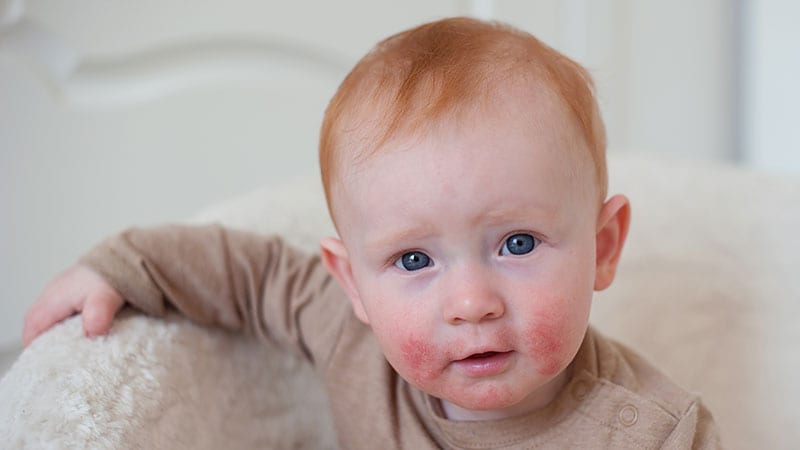[ad_1]
TOPLINE:
Common childhood stressful life events like starting a new school, moving homes, or having a new sibling are associated with an increased risk for atopic dermatitis (AD) activity and severity in children, a study suggests.
METHODOLOGY:
- Researchers conducted a longitudinal cohort study of 13,972 children aged 1-8.5 years from the Avon Longitudinal Study of Parents and Children in the United Kingdom; 4454 had AD.
- Primary caregivers completed standardized questionnaires on about 15-17 age-appropriate stressful life events over the past year at 7 timepoints (18, 30, 42, 57, 69, 81, and 103 months).
- Study outcomes were prevalence and severity of AD.
- Median follow-up was 81 months from birth. Those with AD were more likely to be women, have a higher socioeconomic status, and have mothers who experienced more prenatal stress.
TAKEAWAY:
- The annual period prevalence of AD ranged from 18% to 21%, and 5% to 8% of individuals with AD reported to have “quite bad” to “very bad disease” at any given timepoint.
- The most common stressful life events were starting school (91%), starting a new school (75%), pet dying (54%), moving homes (54%), and having a new sibling (45%).
- Each SD increase in stressful life events was associated with a 4% increase in the odds of active AD (odds ratio [OR], 1.04; 95% CI, 1.01-1.07), with highest risk for children moderate to severe AD (OR, 1.13; 95% CI, 1.03-1.23). Of all life events, starting school was associated with a lower risk for active AD (OR, 0.93, 95% CI, 0.88-0.98).
- Each SD score increase in cumulative stress scores was associated with higher risk for active AD (OR, 1.11; 95% CI, 1.07-1.16) and severe disease (OR, 1.17; 95% CI, 1.05-1.31).
IN PRACTICE:
“In a longitudinal, population-based study, we found associations between the perceived impact of childhood stressful life events and AD,” the authors wrote. The results “suggest that parents and providers may anticipate and proactively moisturize or treat to prevent potential AD flares around life events,” they added, noting that stress-reducing modalities may also be helpful.
SOURCE:
The study was led by Katrina Abuabara, MD, MA, MSCE, Department of Dermatology, University of California, San Francisco, and was published online on January 28 in the Journal of Investigative Dermatology.
LIMITATIONS:
Study limitations included potential measurement error and bias in both exposure and outcome. The stressful life events scale used was not independently validated. Caretaker-reported AD activity and severity may have introduced bias. Validated AD severity scores were unavailable for key timepoints. Potential missing data and selection bias were also a concern.
DISCLOSURES:
The study was supported by the National Institutes of Health and the Wellcome Trust. Abuabara reported receiving consulting fees and grants from pharmaceutical companies. Another author received grants and fellowships from various Government organizations; other authors had no disclosures.
This article was created using several editorial tools, including AI, as part of the process. Human editors reviewed this content before publication.
[ad_2]
Source link : https://www.medscape.com/viewarticle/early-childhood-stress-linked-increased-atopic-dermatitis-2025a10002kl?src=rss
Author :
Publish date : 2025-02-03 05:48:10
Copyright for syndicated content belongs to the linked Source.
